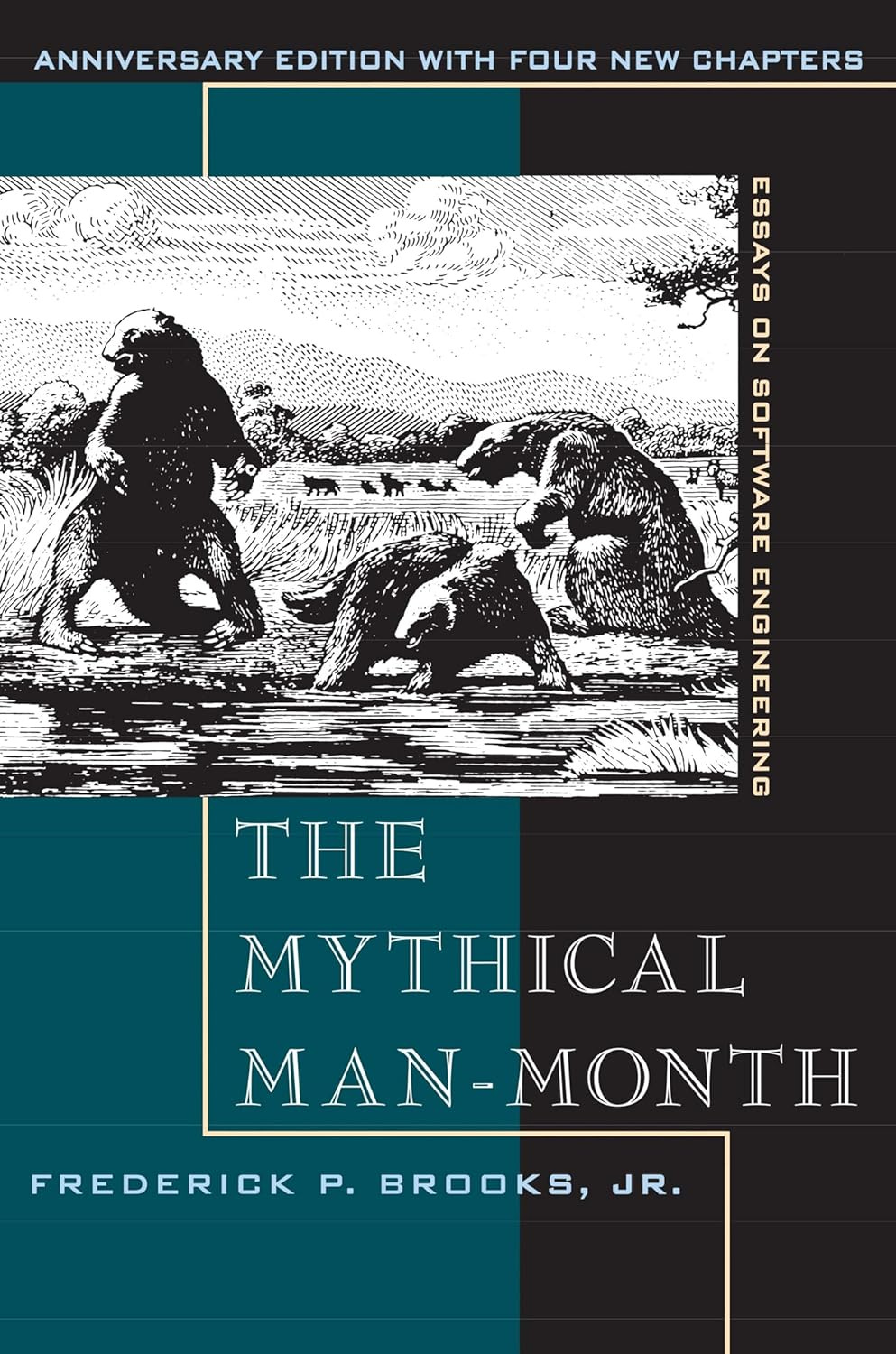We recommend: Frederick Brooks Jr. — 'Mythical Man-Month'
Frederick P. Brooks Jr.’s The Mythical Man-Month is a great example of how software engineers are incrementally forgetting the greatest resources. Over time, its reputation as a foundational text in software engineering made it impossible to ignore. While some elements feel outdated, it remains an important read for anyone interested in understanding the evolution of software project management.
Our Thoughts
The Mythical Man-Month is a collection of essays drawn from Brooks’ experience managing IBM’s OS/360 project. Written in 1975, some of these elements feel like irrelevant and outdated, the book’s core lessons remain extremely relevant.
Brooks famously explains why adding manpower to a late software project often further delays it due to more overhead in communication in teams. His insight into conceptual integrity—that the best systems are architected by a small, cohesive team—is still a key idea in designing good software. An extract of some of the concepts mentioned in the book are as follows:
Manpower vs. Productivity: Software development is not linear. Throwing more people at a late project often adds more delays.
Conceptual Integrity: Systems need a unified vision, best achieved by one or two architects defining the overarching design.
Communication Costs: Team size directly impacts the complexity of coordination. As team members increase, communication overhead grows quadratically.
Plan for the Unexpected: Projects take longer than anticipated—not just due to coding but debugging, integration, and testing.
Iterate to Improve: Brooks advises that the first version of any system will likely need to be discarded, emphasizing the inevitability of rework.
Call to Action
Revisit the foundations of your craft. While The Mythical Man-Month may feel like a history lesson at times, its lessons on team dynamics, planning, and conceptual clarity are as valuable as ever.
When was the last time you reflected on how your team collaborates? Consider whether your processes optimize for clear communication and unified design—or whether they unintentionally add friction.


